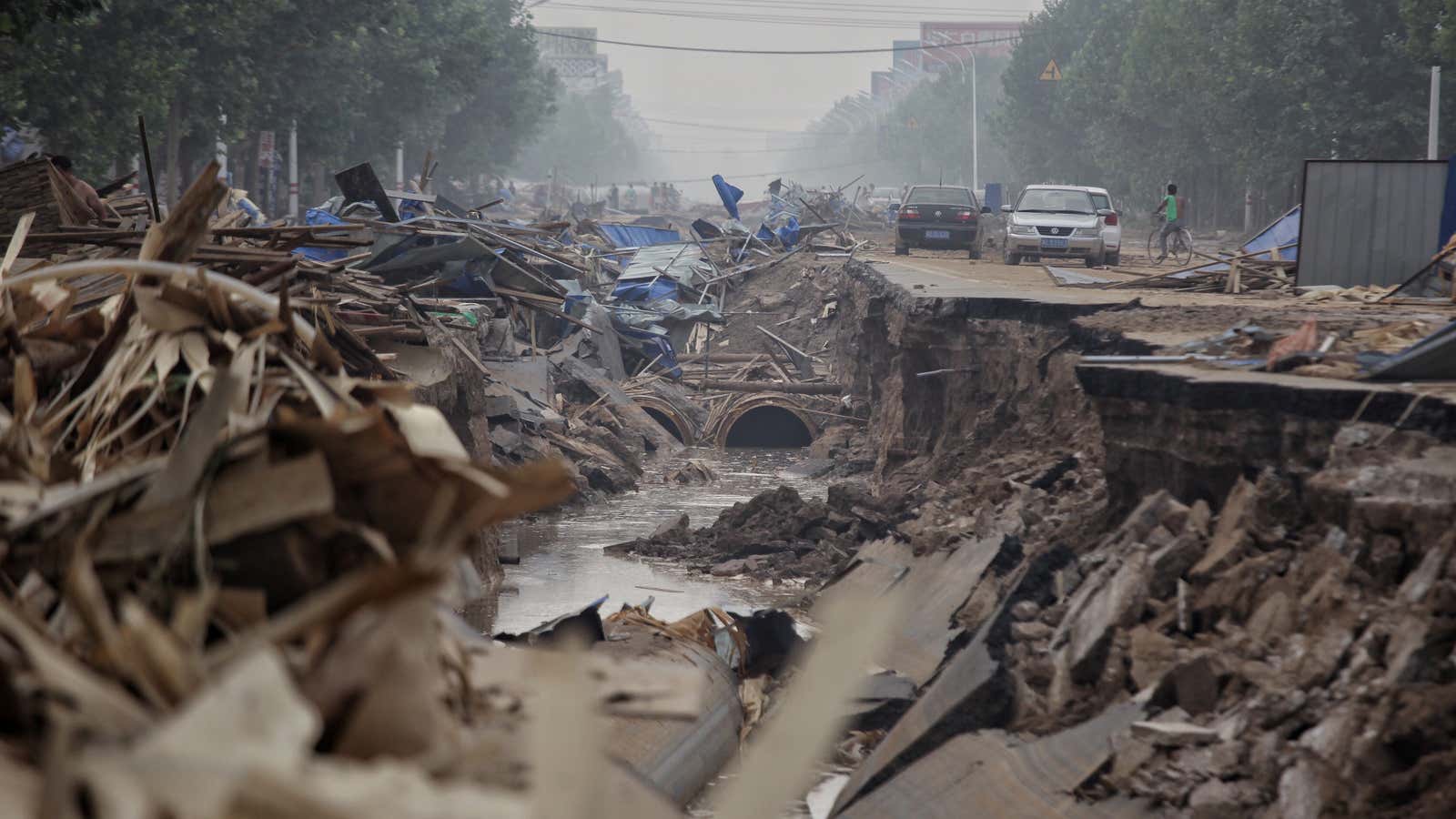China’s northeastern Hebei province has been hard hit by floods in recent days. By July 23, the official death toll stood at 114, with 111 missing and more than 9 million people affected, after heavy rainfall created swollen rivers and destroyed homes.
In the Xingtai municipality, 220 miles southwest of Beijing, the flooding killed 25 and 13 are still missing, nine of them from the small village of Daxian. A sudden flood jumped over the north levee of the Qili River at around 2am on July 20, and rushed towards the village’s south entrance, state-backed newspaper the Beijing News (link in Chinese) reported on July 24.
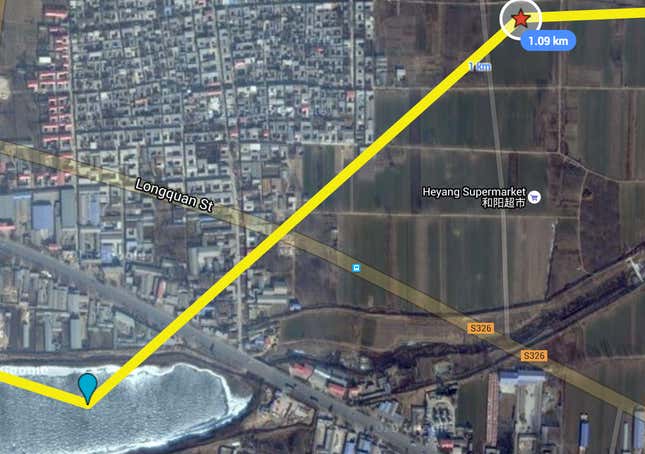
The local government at first said no one had died. At 6pm on July 20, Wang Qingfei, the Xingtai Communist Party boss told local media (link in Chinese) that villagers were evacuated before the flash flood hit Daxian, and “there are no casualties.”
Instead, the government’s incompetence resulted in villagers being killed, according to a number of first-person accounts and local news reports after the flooding.
Wrenching photos and video of villagers finding their drowned relatives are being circulated on Weibo and other social media. Some of the reports and photos have since been censored from China’s internet, but a video of Wang kneeling down in front of local villagers and begging for an apology is now being shared nationwide in China.
It is the second time this month that flooding deaths in China have been linked to government incompetence. In fact, the problems in Hebei follow what is starting to become a familiar pattern—overbuilding and lack of regulation, combined with an often powerless or bumbling local government, result in citizens dying when extreme weather hits.
As China grapples with the effects of climate change in the years to come, these incidents are only likely to increase. Here’s how the situation played out in Hebei.
Warnings that were too little, too late
Daxian residents say they were not adequately warned about the flood, even though officials upstream knew it was coming.
Xingtai vice mayor Qiu Wenshuang claims that the city government ordered the citizens in the area to evacuate at 1:40am on July 20. But Zhang Zhan’ge, the Party secretary of Daxian, told the Beijing NewsLINK that he only received a flood warning by phone at 1:50am, then rushed to tell his fellow villagers.
It was too late. The floodwaters wiped out homes and the highway, covering the area in brown water.
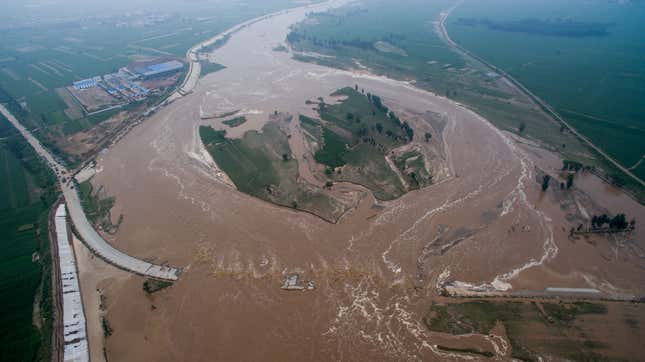
“It was only a few seconds before the water rose to two-meters deep,” Han Ye, a villager who lost his 65-year-old father in the flood, told the Beijing News (link in Chinese). “They didn’t inform us about the floodwater. We were with our three-month-old baby, we could do nothing,” said Han’s wife, who was not named.
Daxian was not the only village to suffer because of an ineffective warning system.
Zheng Jianping, head of the Xingtai Economic Development Zone’s water supplies department, told financial magazine Caijing that he never received any notice from his superiors to evacuate citizens downstream of Qili on July 19.
“We didn’t receive any notice,” Zheng told Caijing, “and we didn’t dare to deliver any evacuation orders for fear that the people would panic.” Each village or town had to decide whether to order an evacuation or not, Zheng added.
One official from the Xingtai water department told the Beijing News he couldn’t warn others because the electricity was out and telecommunications systems were down.
A Hebei provincial government investigation concluded July 25 that the flood-related disasters along the Qili River were caused by heavy rainfall, not “man-made reasons.” Still four local officials were dismissed from their posts (link in Chinese) for their failed disaster relief efforts.
Illegal building on a dried-up river
Dredging, reconstruction, and illegal building along the Qili River may also have affected the flooding.
Part of the riverbed has been completely dried up for at least three or four years, Google Maps data shows, and homes have sprung up in the empty land.
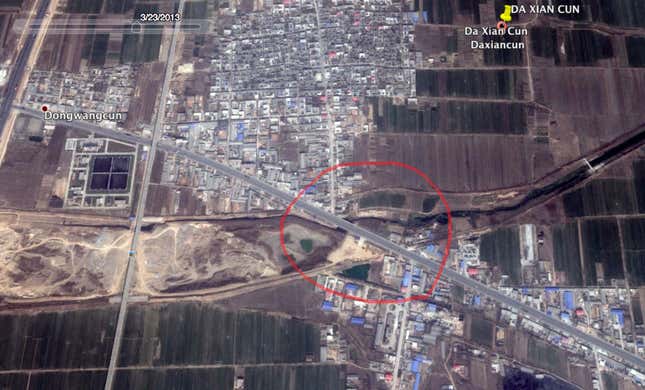
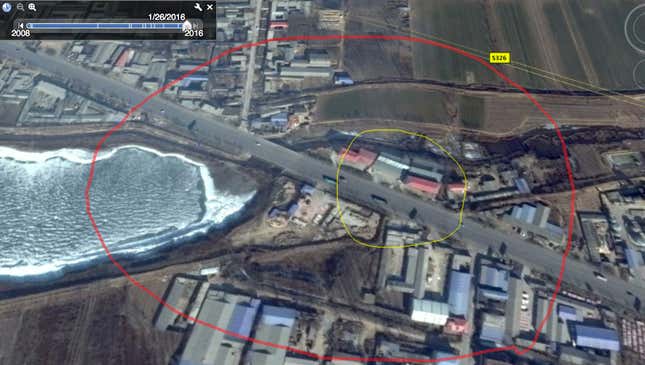
“Some local people built buildings illegally in the dried-up waterways… some officials failed to recognize the severity of the flood risks and failed to implement their duties, leading to huge losses when the areas were hit by natural disasters,” Yang Xiaodong, an official with the Ministry of Civil Affairs, said on July 27.
A local activist has also questioned (link in Chinese, registration required) local government reconstruction projects. Pictures on his blog show a four-meter-deep ditch, dug out in the middle of the village’s southern road.
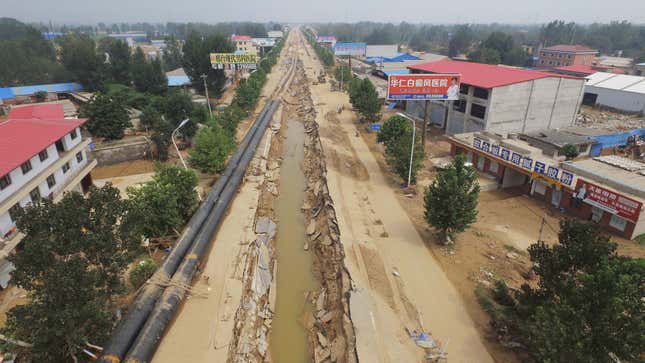
Dirt from the ditch was dumped into the riverbed, changing the original direction of the river, he wrote.
“The original river was a few hundred meters wide but was intercepted here, the water had no way to go,” the activist wrote.
Upstream on the Daxian Village
There are three dams near Daxian that contain the Zhuzhuang, the Dongchuankou and the Yegoumen reservoirs. On the afternoon of July 19, the Xingtai government said it would open the Zhuzhuang Reservoir dam, to release rising floodwater, according to the Beijing News.
Many locals have questioned whether this release could have contributed to the flooding in Daxian.
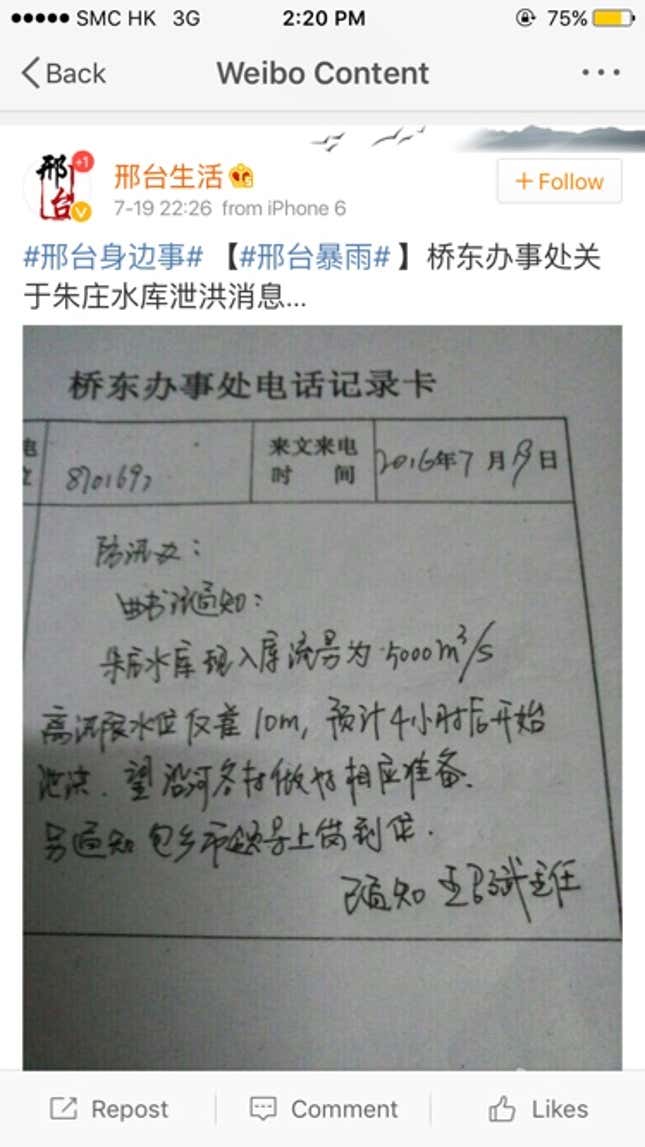
A citizen-run Weibo account for the village of Qiaodong (link in Chinese, registration required), about 100 km east of Daxian, published a snapshot of the dam release announcement at 10:26pm on July 19.
“From flood control department: Currently water is flooding into the Zhuzhuang Reservoir at the speed of 5,000 cubic meters per second. It’s 10 meters away from the water level limit. Four hours from now, the dam will be opened. Every related department please be prepared,” it said.
At a press conference on Saturday (July 23), the Xingtai city government denounced claims (link in Chinese) that the flood was caused by opening dams in the Qili River. Only one reservoir, the Dongchuankou, is actually located upstream on the Qili and it is “unadjustable,” they said. The water discharged from Zhuzhuang Reservoir runs into a separate river, local officials said.
On this point, officials appear to be giving the correct information.
In the map below, the red star is Daxian, and the Qili river is just to the left. The Dongchuankou Reservoir is the waterway on the the top left, while the lower waterway on the left is the Zhuzhuang Reservoir.
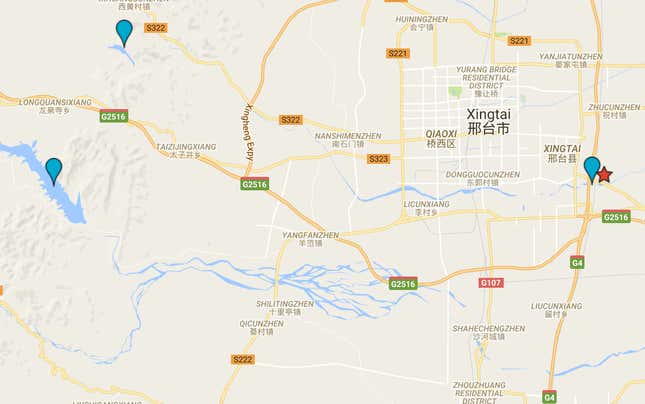
The Dongchuankou Reservoir was nearly full at 1am, and water spilled over the dam afterward, and traveled to Daxian.
But Hu Lifeng, manager of the Dongchuankou Reservoir, told the Beijing News (link in Chinese) that there’s no way the water could have reached Daxian quickly enough to cause the deadly flooding at 2am. Dongchuankou Reservoir is “around 50 km from the village, and the water could have never reached to the village within an hour,” he said (link in Chinese).
The Hebei government (link in Chinese) concluded that the levee devastation on the Qili river was caused by heavy rainfall alone.
Anger and rumors spread
Anger at the government’s handling of the flooding is spreading on social media.
After Xingtai’s official Weibo account (link in Chinese, registration required) released a statement about the floods claiming an evacuation announcement was made at 1:40am on July 20, one Weibo user wrote, “Oh, how ‘early’ came the announcement!”
Another wrote “Oh you are not from Daxian, if you are, would you say the same thing? Whenever there is responsibility you just blame it on nature. Yes, nature is responsible for all accidents!”
On July 26, the Xingtai Public Security Bureau announced on Weibo (link in Chinese) that it had punished three people for spreading rumors about the death toll. The response from other citizens was scathing. “Whoever hides the truth deserves more punishment than these rumor spreaders,” one wrote. “Only officials can tell lies,” another said.
